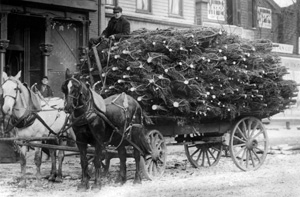 October 1, 2008 marks the 100th anniversary of the Model T Ford and the beginning of the end for working horses on streets and farms in the United States. The popularity of “motor driven machines” soon changed the landscape.
October 1, 2008 marks the 100th anniversary of the Model T Ford and the beginning of the end for working horses on streets and farms in the United States. The popularity of “motor driven machines” soon changed the landscape.
The transition was not, however, without turmoil. Some communities passed absurd regulations in an effort to control traffic. One required a driver to pull a canvas painted with farm scenery over his car, if a horse drawn vehicle refused to pass him. Another instructed a motorist driving at night to send up a flare and wait 10 minutes for the road ahead to be cleared of horse traffic before he proceeded.
By 1920, the Breeders’ Gazette noted the startling decline of the horse population in New York City from 128,224 horses in 1910; to 108,036 in 1917; to 75,740 in 1919. The Gazette also reported in 1920 that Chicago had 19,550 motor vehicles, up from 800 in 1911. While in the same period that city’s work horse population had dropped from 80,000 to 40,000.
The Great Depression kept a lot of horses at work on the farm in the 1930s, where it was economical to feed and keep them. Gas and tire rationing during World War II put some horses back on the streets pulling milk wagons and other delivery vehicles, but when the war ended, so did the era of horse drawn transportation.
